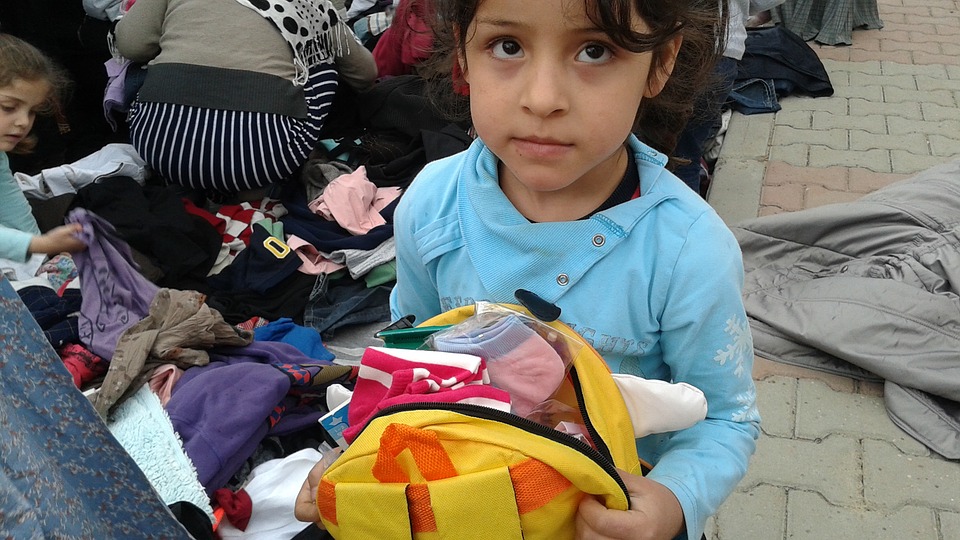Spousal Sponsorship Guidelines
How You Can Help Your Spouse Immigrate to Canada
Family reunification is a priority in Canada’s immigration system. Families provide social and emotional support that helps ease the transition to residing in a new country. As a result, newcomers can improve their resettlement efforts and integration into Canadian society.
One part of family reunification is spousal sponsorship. If your spouse lives abroad, you can apply to sponsor them, so they can join you in Canada and become a permanent resident. For more information and help with the application process, contact an immigration lawyer in Ottawa.
The following are spousal sponsorship guidelines to help you understand the immigration process for a spouse who is from another country.
Who Can Sponsor a Spouse?
Both Canadian citizens and permanent residents can apply to sponsor their spouse, common-law partner, or conjugal partner.
Who Qualifies as a Spouse?
According to Canadian immigration law, a spouse is someone who you have married. A common-law partner is someone you have an intimate relationship with and have lived together for at least one year. A conjugal partner is someone with whom are in a marital-like relationship, but you cannot live together for reasons beyond your control. Spousal sponsorship also includes same-sex relationships.
You may also sponsor dependent children, and in some cases, close relatives.
Permanent Resident Card
In Canada, the equivalent to an American Green Card is a permanent resident card. With permanent resident status, your spouse can live and work anywhere in Canada. They must meet their residency obligations and other requirements to maintain this status. Once they achieve permanent resident status, they are eligible to apply for Canadian citizenship after three years of being physically present in Canada within the last five years. Or, in some cases, they can apply for citizenship after two years, if they were a temporary resident in Canada before they became a permanent resident.
Processing Times
The average spousal sponsorship application processing time is 12 months. However, this time could be shorter or longer, depending on various circumstances.
Sponsorship Overseas
You may apply to sponsor your spouse while they are residing in another country. First, you must submit a sponsorship application for your spouse to come to Canada with the Immigration, Refugee and Citizenship Canada office in Mississauga. Your spouse must also apply for permanent residence at this office.
Once your sponsorship application is approved, this file will go to the Canadian Consulate in your spouse’s country. Your spouse will have to pass several checks before being approved to enter Canada, such as medical tests, criminal records, and security screenings.
Sponsorship in Canada
You can file an application to sponsor your spouse from within Canada, known as internal processing, if you two have been living together in Canada—i.e., your spouse is working, studying or visiting on a visa. During this processing, your spouse must maintain legal status in Canada, such as through visa renewals. If your spouse lacks status, you may still be able to sponsor them in Canada, if you meet certain requirements.
If your spouse has temporary status, you can file the sponsorship application and a work permit application at the same time. The work permit processing time will take about four to six months, while the sponsorship processing will take about one year. A final interview with you and your spouse will take place at an immigration office in Canada before the applications are officially approved.
For more information on spousal sponsorship, special circumstances, and the Canadian immigration process, contact an immigration lawyer in Ottawa.
Thousands of Syrian Refugees Are Still Waiting to Come to Canada
Despite Government Promises and Initiatives, Delays in Processing Time Have Left Many Syrian Refugees Waiting to Resettle in Canada
When the Canadian Government promised to resettle thousands of Syrian refugees during the wake of the Syrian refugee crisis, many Canadians got together, raised money, and worked to help make that a reality. Groups of Canadians have privately sponsored Syrian families, raising enough money to secure housing and ensure a comfortable resettlement in Canada. But delays in application processing have left many refugees stuck overseas even though they have homes, families, and sponsors waiting for them in Canada. For help with refugee sponsorship and navigating the immigration system, contact refugee lawyers.
Increased Processing Times
In 2015, the Canadian Government announced it would welcome 50,000 Syrian refugees through both government and private sponsorships. But as of December 2017, 20,000 sponsorship applications were still in the Immigration Department’s processing backlog. And according to private sponsors, the processing time for these applications has increased, going from 13 months to 19 months.
Many sponsored refugees wind up stuck living in poor conditions in camps, unable to work legally, and at risk of local governments sending them back to Syria. Processing times vary by country and are affected by several factors, including security concerns, establishing identity, and logistical challenges.
Canada’s Immigration Department aims to clear the privately sponsored backlog by the end of 2019. And for new applications submitted after 2019, the department plans to reduce the wait time to around 12 months.
Goals Missed?
But refugee advocates have accused the government of missing its previous goal to process applications received before March 31, 2016, by early 2017. Advocates also argue there are ongoing problems with a lack of transparency regarding files and trouble getting feedback on applications. So sponsors are unable to find out how long it will be until their sponsored families can arrive in Canada.
Until these applications are processed, many sponsored refugees are stuck waiting, some living in unpleasant conditions while their Canadian sponsors keep their new homes waiting for them. In addition, families who have already settled in Canada keep waiting and worrying about when they will see their loved ones again.
Although local governments overseas are partly to blame for lengthy wait times, the current backlog in Canada’s immigration system doesn’t help either. Until the government is willing to allocate more resources to process applications, more refugees will be stuck waiting for longer, not knowing if or when they will make it to Canada to live a safer, better life in their new homes with their loved ones nearby.
If you need help with a sponsorship application, contact refugee lawyers today.
Increase in Wrongfully-Denied Spousal-Sponsorship Applications
New Streamlined Spousal Sponsorship Program is Causing Delays Due to Government Errors
In 2016, the Canadian Government announced it would cut processing wait times for spousal-sponsorship applications. This move aimed to make the application process easier for Canadians and their families by fast-tracking permanent residency for foreign-born spouses.
However, some immigration lawyers have noticed that, since this announcement, more of these applications are erroneously being returned as incomplete. In several cases in particular, it appears that government errors are to blame. In turn, these errors cause delays and (sometimes) multiple denials.
Key Details and Documents Unseen
Fast-tracking appears to have come with a cost. To speed up processing times, immigration officers seem to be reviewing applications too quickly, missing key information in the process. In some cases, immigration officers have missed included documents entirely.
Immigration, Refugees and Citizenship Canada (IRCC) officers are denying and returning applications, citing missing required documents. However, these required documents remain inside the returned applications. In some cases, though, the documents aren’t returned at all. It’s lucky, then, that the immigration lawyers submitting these applications are making copies of all pertinent documents.
It appears that IRCC officers are making quick judgments to stick to faster process times, only giving applications a cursory glance. This results in erroneous judgments, in turn causing unnecessary stress for applicants and their families. It’s hard not to view such events as the result of the fast-tracking announced in December 2016.
Prior to the announcement of the streamlined spousal sponsorship program, processing times were around 24 months on average. The new wait time halves that, aiming for a 12-month wait time.
Wrongful Denials Increase Wait Times
But in the cases of errors and the wrongful return of applications, applicants may experience further (and far more stressful) delays, especially when applications are denied multiple times. As such, it seems that (at least for some applicants) the new system is not making it easier as intended. During the wait time and reapplication process, visas expire, leaving applicants unable to work.
Critics have suggested the government set up an online application system to mitigate the effects of human errors and also to minimize the risk of applicants submitting incomplete applications. This would provide an easy and fast check for immigration officers, ensure application submissions that include all required documents and information. The IRCC is not currently considering an online application system for spousal sponsorship.
So, until they address the causes of these errors and make a necessary change to the system, more Canadians and their families will likely experience the stress and uncertainty of wrongful returns and delays of their spousal-sponsorship applications.
Canadian Tech Boom Caused by Trump?
“Buy-American, Hire-American” Executive Order Continues to Make Canada’s Tech Industry Appealing for Skilled Foreign Workers and Their Families
Thanks to U.S. President Donald Trump’s America-first policies, skilled foreign workers in Silicon Valley now have another reason to move to Canada. The Trump administration plans to rescind work permits for spouses of skilled foreign workers, getting rid of legislation that former U.S. President Barack Obama introduced in 2015. This change could drive more tech workers north to Canada since Canada has an open spousal work permit for skilled workers and the road to permanent residency is clearer.
Skilled foreign workers in the U.S. can obtain an H-1B visa (a non-immigrant visa) for employment with U.S. companies. Any dependent of an H-1B visa holder requires an H4 visa. Prior to legislative changes in 2015, H4 visa holders were unable to work or receive social security numbers in the U.S. Since dependents, especially spouses, could not fully integrate into American society with employment through this visa, this made moving to the U.S. a difficult decision for skilled immigrants.
Now that the U.S. Department of Homeland Security plans to rescind this work permit, skilled immigrants must find alternatives if their spouses want to work and to resettle with their families. Increasingly, it appears this alternative may be to consider a move to Canada.
Spouses of skilled workers can apply for an open spousal work permit in Canada. In light of the U.S. government’s current stance on skilled foreign workers, this openness holds appeal. After all, moving to a new country, even for work, is rarely a short-term situation. Work permits are often a path to permanent residency and eventually full citizenship.
But current U.S. policies might make these workers rethink their plans. Despite employment opportunities within the States, there’s hardship for spouses who can’t obtain a work visa.
Because of these policies, Canada’s growing tech industry will continue to benefit. There is an increasing demand for skilled workers in Canada’s Information and Communications Technology industry. Canada addresses this need for talent by fast-tracking some of the skilled foreign workers through Express Entry and other economic immigration programs. The result is a boost to the tech industry and the Canadian economy.
The U.S. government’s stance may push away skilled talent from a wide range of industries. It’s a boon for Canada, though, as the country will likely welcome these skilled workers and their families. The economic and social boost cannot be understated.
Recent Spike in Canadian Citizenship Applications
Changes to Language and Residency Requirements Cited as Cause of Increase in Citizenship Applications
To make it easier for permanent residents to attain Canadian citizenship, the Canadian Government relaxed residency and language rules for applicants in October 2017. Following these changes, the number of citizenship applications skyrocketed, showing how a slight change and a bit of flexibility can significantly impact the lives of many.
These changes include:
- Applicants must be physically present in Canada for three out of five years, down from four out of six years;
- Part of the applicants’ time spent in Canada prior to becoming a permanent resident—i.e. as a student or a temporary foreign worker—will now count towards the residency requirement;
- Applicants aged 18 to 54 years old must meet the language and knowledge requirements, a reduction from the previous age range of 14 to 64 years old.
According to data from Immigration, Refugees and Citizenship Canada (IRCC), there was an average of 3,653 applications a week prior to October’s changes. Following these changes, application numbers spiked to 17,500. This number dropped to 12,530 the following week, still significantly higher than the previous average.
This increase in application numbers was expected as the change in the rules made it easier for more permanent residents to qualify for Canadian citizenship. However, the cost of the application may still deter many; financial concerns may present another barrier to Canadian citizenship. The citizenship application processing fee increased to $630 in 2014. Though still comparatively low, this fee poses a barrier to those facing financial hardships.
Addressing these changes in October, Immigration, Refugees, and Citizenship Minister Ahmed Hussen said they would “make the path to join the ‘Canadian Family’ easier and more flexible.” Hussen acknowledged how the settlement and integration of immigrants into Canadian society is also beneficial to the rest of Canada. These newcomers are able to reunite with family, fulfill labour shortages, and contribute to the economy and Canadian society as a whole.
It’s now easier for more immigrants to meet application requirements for Canadian citizenship. But those who cannot afford the processing fees must still wait to secure a spot in the “Canadian Family.”





